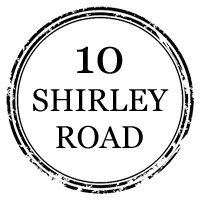“What if We Built Our Communities Around Places? Placemaking inspires people to collectively reimagine and reinvent public spaces as the heart of every community. Strengthening the connection between people and the places they share, placemaking refers to a collaborative process by which we can shape our public realm in order to maximize shared value. More than just promoting better urban design, placemaking facilitates creative patterns of use, paying particular attention to the physical, cultural, and social identities that define a place and support its ongoing evolution.”
https://www.pps.org/category/placemaking
“What Makes a Successful Place? Great public spaces are those places where celebrations are held, social and economic exchanges occur, friends run into each other, and cultures mix. They are the ‘front porches’ of our public institutions – libraries, schools – where we interact with each other and government. When these spaces work well, they serve as the stage for our public lives…they generally share the following four qualities: they are accessible; people are engaged in activities there; the space is comfortable and has a good image; and finally, it is a sociable place: one where people meet each other and take people when they come to visit.”
https://www.pps.org/article/grplacefeat
“The Power of 10+ shows how paying attention to the human experience when building a city’s destinations and districts can have immediate and widespread impacts. The idea behind this concept is that places thrive when users have a range of reasons (10+) to be there. These might include a place to sit, playgrounds to enjoy, art to touch, music to hear, food to eat, history to experience, and people to meet. Ideally, some of these activities will be unique to that particular place, reflecting the culture and history of the surrounding community.”
https://www.pps.org/article/the-power-of-10
“Project for Public Spaces, the premier placemaking organization, calls this the Power of 10. They assert that every place should accommodate at least ten different kinds of activities. Not only will this make the place more inviting to a wide range of users, but it will make it more likely that the place will be used more extensively, at all times of the day and during all seasons of the year making it safer for everyone.”
https://www.theemptysquare.org/stories/bumping-places
“Placemaking: Building on the ‘Soul’ of a Place: Every place already has a story to tell—placemaking just brings that story forward…We start with the belief that every place already has a history and a story to tell—that places already have soul. Our role as designers is to honor that story, bring it forward and integrate it into every level of design and detail, from the shaping of space to programming, lighting, materiality, and signage. The best measure of good placemaking is after having visited a place, you find yourself compelled to tell others about it. It becomes a place you’re excited to return time and again…Incorporate environmental graphic elements. Not just for wayfinding, environmental graphics are critical to placemaking. They serve as art, backdrop, furniture, and landmark. They improve upon the functional experience of the place, such as signage showing how to move through the park, or the educational interpretive messaging woven throughout.”
https://www.planetizen.com/features/119054-placemaking-building-soul-place
Shirley Centre: Identity | Well-being | Learning
“You Are Here”: a place to be, in our communities.
Community Education & Support Services in Learning Libraries
1. ‘Suburban’ Library
2. Christchurch City Council Service Centre
3. Learning Spaces
4. Meeting Rooms
5. NZ/Genealogy Area
6. Internal Courtyard
7. Indoor/Outdoor Seating Options
8. Natives Garden (Dudley Creek)
9. Wellbeing Sensory Garden
10. Events/Market Space (Carpark)
11. Inclusive Accessible Playground
12. Basketball Court/Youth Area
13. Shirley Playcentre
14. StoryWalk
15. Dudley Creek Trail
